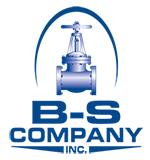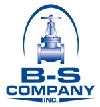As with all companies involved in the steel industry, we at BS Company regularly deal with material test reports. Also known as Mill Test Reports or MTRs for short, these are the most important quality assurance documents in the production of stainless steel. What are they? What do they contain and why are they so important?
What is a material test report?
It is very important to know the chemical and physical properties of steel. With this information, you can tell what grade of steel you have, and what it should best be used for. The purpose of the MTR is to provide all of this information in a single document. It is a quality assurance certificate that lists all the components of the steel’s makeup, and proves that the product has been made in compliance with international and national standards, such as those of the American National Standards Institute (ANSI) and the American Society of Mechanical Engineers (ASME). An MTR provides proof that a particular output of stainless steel is of a high quality.
Why do MTRs matter?
MTRs are vital for both steel fabricators and anyone who wishes to purchase and use steel. The document is analogous to certificates of quality and standard assurances in any other industry. Steel users need to know that the steel they are buying is well made and is going to serve the purpose. An MTR provides this proof. ASME standards also demand that items are traceable. Traceability means the ability to identify a particular piece of steel, even after it has been built into a structure. Throughout the structure’s life the steel that was used in its construction must be identifiable and traceable. MTRs enable traceability as well as quality assurance.
What information does an MTR contain?
Before explaining how to read a material test report, let’s quickly break down the information it contains:
- Product description: The product’s material grade, edition year, alloy, temper, dimensions and finish are listed.
- Heat number or heat lots: The heat number is a code which tells us about a piece of metal’s origin. It verifies quality and is also the key to the metal’s traceability.
- Mechanical/ physical properties: Here you will find the steel’s strength, ductility, hardness and elasticity. End users need to be able to read this to ensure that the steel they are buying is fit for purpose.
- Chemical properties: A comprehensive breakdown of the steel’s chemical composition is provided. Each piece of steel, depending on its alloy and the use for which it has been fabricated, will need to fall within certain required ranges
Each of these pieces of data is important, but perhaps the most vital component of the MTR is the heat number, because of its importance to the tracing process. Tracing processes use the mill heat codes, together with material purchase orders, and component manufacturer heat codes. The mill heat codes and manufacturer heat codes are also correlated to facilitate tracing. Heat codes are commonly stamped or written out on the surface of the metal. The heat number needs to recorded by everybody who handles a piece of steel. The fabricator will note which heat lots they have sold to dealers or product manufactures, who must then also take note of the heat number and make sure their records reflect that this particular piece was used as an input in their manufacturing process.
How to read a material test report
A material test report may contain a lot of technical information but it is all usually laid out in an easy to read way. Once you know what each of the numbers mean, it is difficult to make sense of a report.
The top row of the report will usually contain part numbers and part descriptions specific to the fabricator, as well as the dimensions (length, width, height). The next row will contain the lot number and heat number, as well as the specification of the steel. The heat number we have already explain. The specification refers to the ASTM and ASME standards applied to the given material. This helps you understand what this particular steel was made for.
The material grade, which classifies metals by their chemical composition and physical properties, is also included. For example, a report may indicate that a particular piece of stainless steel is graded 308 or 316.
Next, the results of the chemical tests will be listed. The ASTM or ASME standard requirements for particular elements are shown, and next to these are the actual quantities of those substances found in the steel. The list will include elements such as chromium (Cr), carbon (C), cobalt (Co), lead (Pb), manganese (Mn), Tin (Sn) and tungsten (W).
After the chemical analysis, the mechanical properties are listed. Mechanical properties are the specific tolerances that the steel has when used in particular applications. If a material falls within the ASTM or ASME-specified standards, it can be used in that application. The qualities tested here include hardness, impact, fatigue, tensile and fracture.
About BS Company
BS Company opened its doors in 1990 at a small 8,000 sq/ft location, “The Office” in Magna, UT. We’re grateful for the growth we’ve seen over the years and now operate three branches and one manufacturing facility. Our inventory consists of:
- 6,000 + tons of pipe ON THE GROUND! (300 semi truckloads)
- 1,500 + tons of fittings & flanges ON THE GROUND! (75 semi truckloads)
- 10,000 + valves ON THE GROUND
Our pipe and fitting inventory is held at our “Pipe Yard” in Toole, Utah. The “Pipe Yard” boasts much more than its name. There are 30 acres of carbon steel pipe, HDPE pipe, and large OD carbon steel fittings and flanges on the ground at this location. A new 10,000 sq.ft. warehouse stocked with large OD valves was added in 2014. We have pipe sizes up to 108”, fittings & flanges up to 48”, valves up to 36”, and stainless steel fittings & flanges, studs & nuts, and more on this site.
We hold extensive stocks of high yield carbon steel fittings, in addition to a variety of other steel pipe and fittings of all grades and for a wide variety of uses. For more information, contact us.


